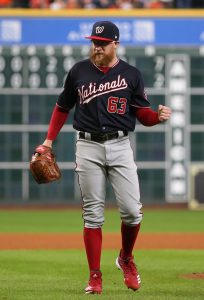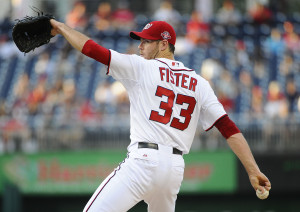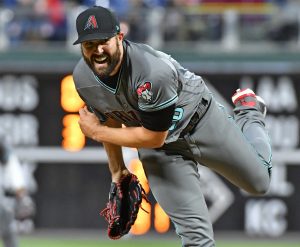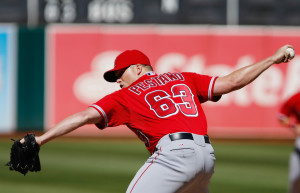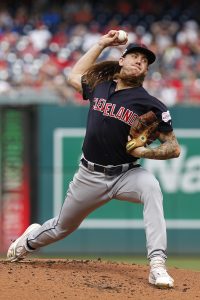The Blue Jays were the talk of the 2015 trade deadline. A few days after bringing in star shortstop Troy Tulowitzki from the Rockies, the Jays struck for the top rental starting pitcher on the market: Tigers’ left-hander David Price. Amidst a seven-year run of pristine durability and general excellence, 2015 was perhaps Price’s peak season. At the time of the deal, he was sitting on a 2.53 ERA over 146 innings.
It was a fascinating swap for a number of reasons. The 52-51 Jays were only 1.5 games above the Tigers in the standings, making the organizations’ decisions to take diverging approaches at the deadline particularly interesting. At the time, Fangraphs gave the talented, but to that point underperforming, Toronto club a 48.9% shot of reaching the postseason, while the Tigers’ playoff odds sat at a lowly 9.7%. In that context, it makes sense then-Blue Jays GM Alex Anthopolous considered the time right to push his chips in; it’s equally sensible then-Tigers GM Dave Dombrowski pivoted his organization toward a rebuild.
Just as notable was the steep acquisition cost. The Jays sent the Tigers a trio of left-handed pitching prospects, led by Daniel Norris, who had entered that season as Baseball America’s #18 overall prospect. He’d had some strike-throwing issues in the minors, but Norris looked the part of a potential power mid-rotation starter.
Unfortunately, Norris has never really made good on that immense promise. In four-plus seasons in Detroit, the former second-rounder has a cumulative 4.56 ERA/4.41 FIP in 396.1 innings. His once-dominant stuff has waxed and waned in that time. Norris quietly had a strong second half in 2019, particularly after being limited to three innings per start in August. Perhaps there’s hope yet for the 27-year-old to find his niche.
Even if Norris hasn’t turned out the way Detroit fans may have envisioned, the Tigers have gotten plenty of long-term value from the Price deal. Matthew Boyd was arguably viewed as the third piece at the time, behind Norris and Jairo Labourt. (Labourt, then a well-regarded low minors starter, never panned out, even after moving to the bullpen). Boyd had already reached the majors but was viewed as a back-of-the-rotation type. Suffice it to say most didn’t envision him emerging as one of the game’s premier strikeout artists, but that’s exactly what he did in 2019. Among pitchers with at least 100 innings, Boyd ranked thirteenth in strikeout rate (30.2%) while maintaining his long-lauded control (6.2% walk rate).
Boyd’s 4.56 ERA didn’t match up with those strong peripherals, mostly due to an abundance of home runs. Indeed, he’s a fly ball pitcher who may always serve up a few too many longballs to be a top-of-the-rotation arm. As much as any pitcher in baseball, Boyd could stand to benefit if the ball is less lively than it has been in recent seasons. More than ever, though, teams covet pitchers with swing-and-miss stuff. Between his four-seamer and slider, Boyd has a pair of bat-missing weapons.
With the Tigers yet to emerge from the rebuild the Price trade symbolically kicked off, Boyd himself could be on the move in the near future. Detroit didn’t actively look to trade him last offseason, but the club also seems unlikely to contend by 2022, his final season of team control. He’ll no doubt pique contending teams’ interest and would bring back a much stronger return than his ERA might otherwise suggest.
As for the Jays, their story has been told many times, although their fans may not mind hearing it once more. They stormed back in the second half, not only securing a playoff berth but erasing a seven-game deficit to win the AL East. Toronto knocked off the Rangers in the ALDS that year in one of the more memorable series in recent history. Their magical second-half run came to an end in the ALCS at the hands of the eventual World Series champion Royals. Price was instrumental to that success, tossing 74.1 innings of 2.30 ERA ball in the season’s final two months. He parlayed his longtime excellence into a seven year, $217MM deal with the Red Sox that offseason.
All told, the trade looks like a win for both sides. The Blue Jays got an elite two months from an ace to help propel them to a division title. The Tigers have gotten plenty of valuable innings over the longer term. Indeed, they got their high strikeout, mid-rotation southpaw out of the deal, even if it wasn’t the player anyone expected to it be.

